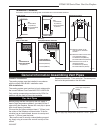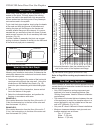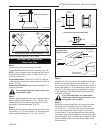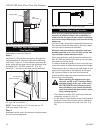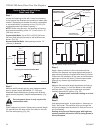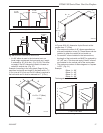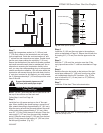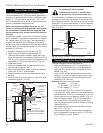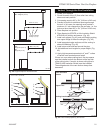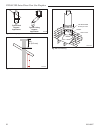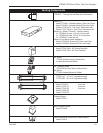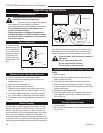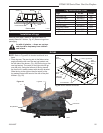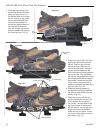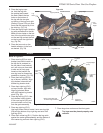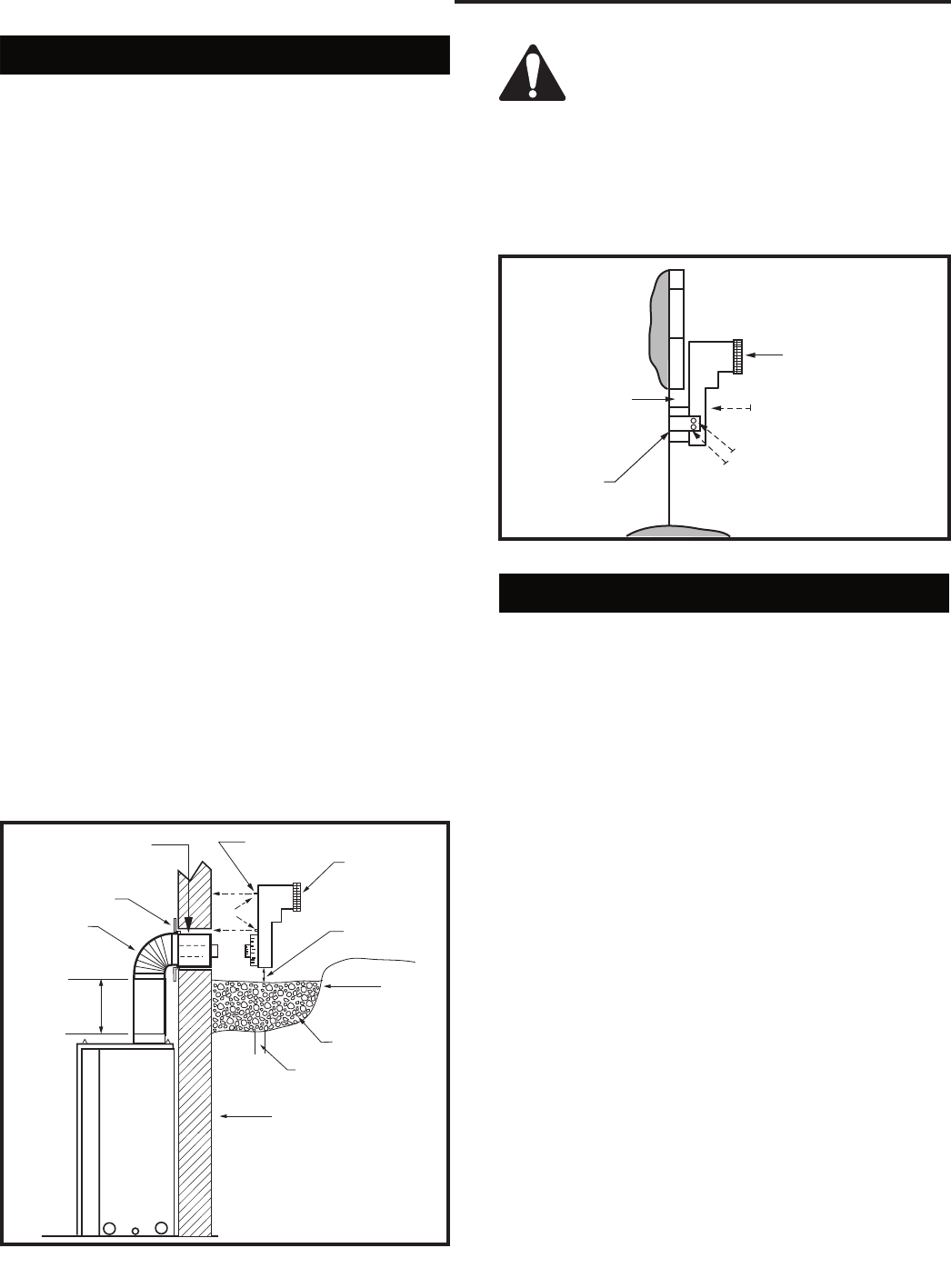
20
DV360/580 Series Direct Vent Gas Fireplace
20010667
Below Grade Installation
When it is not possible to meet the required vent ter-
minal clearances of 12” (305 mm) above grade level, a
snorkel kit is recommended. It allows installation depth
down to 7” (178 mm) below grade level. The 7” (178
mm) is measured from the center of the horizontal vent
pipe as it penetrates through the wall.
Ensure the sidewall venting clearances are ob-
served. If venting system is installed below ground,
we recommend a window well with adequate and
proper drainage to be installed around the termina-
tion area.
If installing a snorkel, a minimum 24” (610 mm) vertical
rise is necessary. The maximum horizontal run with the
24” vertical pipe is 36” (914 mm). This measurement
is taken from the collar of the fireplace (or transition
elbow) to the face of the exterior wall. See the Sidewall
Venting Graph for extended horizontal run if the vertical
exceeds 24” (610 mm).
1. Establish vent hole through the wall (Fig. 32)
2. Remove soil to a depth of approximately 16”
(406mm) below base of snorkel. Install drain pipe.
Install window well (not supplied). Refill hole with 12”
(305 mm) of coarse gravel leaving a clearance of ap-
proximately 4” (102 mm) below snorkel. (Fig. 38)
3. Install vent system.
4. Ensure a watertight seal is made around the vent
pipe coming through the wall.
5. Apply high temperature sealant caulking (supplied)
around the 4” and 7” snorkel collars.
6. Slide the snorkel into the vent pipes and secure to
the wall.
7. Level the soil so as to maintain a 4” (102 mm) clear-
ance below snorkel. (Fig. 38)
BG402a
Top Vent
Below grade installation
1/26/00 djt
Firestop
7” Pipe
7TDVSNORK
(Snorkel)
4” (102mm)
Clearance
Min.
Window
Well
Gravel
Drain
BG402a
Fig. 38 Below grade installation.
Zero Clearance
Sleeve
(if required)
*A minimum of 24” (610 mm)
vertical pipe must be installed
when using the 7TDVSNORK
Kit.
24” (610mm)
Minimum*
Screws
Foundation Wall
Do not back fill around snorkel.
A clearance of at least 4” must be main-
tained between the snorkel and the soil.
If the foundation is recessed, use recess brackets (not
supplied) for securing lower portion of the snorkel. Fas-
ten brackets to wall first, then secure to snorkel with self
drilling #8 x 1/2 sheet metal screws. It will be necessary
to extend vent pipes out as far as the protruding wall
face. (Fig. 39)
BG401
Snorkel
2/10/99 djt
Snorkel
Wall Screws
Foundation
Recess
Watertight
Seal Around
PIpe
Sheet Metal Screws
BG401
Fig. 39 Snorkel installation, recessed foundation.
Vertical Through-the-Roof Application
This gas fireplace has been approved for:
• Vertical installations up to 40’ (12 m) in height. Up
to a 10’ (3 m) horizontal vent run can be installed
within the vent system using a maximum of two 90°
elbows. (Fig. 40)
• Up to two 45° elbows may be used within the hori-
zontal run. For each 45° elbow used on the horizon-
tal plane, the maximum horizontal length must be
reduced by 18” (450 mm).
Example: Maximum horizontal length:
No elbows = 10’ (3 m)
1 x 45° elbow = 8.5’ (2.6 m)
2 x 45° elbows = 7’ (2.1 m)
• A minimum of an 8’ (2.5 m) vertical rise is required.
• Two sets of 45° elbow offsets may be used within the
vertical sections. From 0 to a maximum of 8’ (2.5 m)
of vent pipe can be used between elbows. (Fig. 41)
• 7DVCS supports offsets. (Fig. 43) This application
will require that you first determine the roof pitch
and use the appropriate starter kit. (Refer to Venting
Components List)
• The maximum angular variation allowed in the sys-
tem is 270°. (Fig. 41)
• The minimum height of the vent above the highest
point of penetration through the roof is 2’ (610 mm).
(Fig. 44) Refer to note 2, Page 14.




